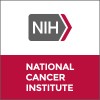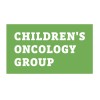
131 I-MIBG in Treating Patients With Refractory or Relapsed Neuroblastoma
NeuroblastomaRATIONALE: Radioactive drugs, such as 131 I-MIBG, may carry radiation directly to tumor cells and not harm normal cells. PURPOSE: This phase II trial is studying how well 131 I-MIBG works in treating patients with refractory or relapsed neuroblastoma.

Ixabepilone in Treating Young Patients With Refractory Solid Tumors
Adult RhabdomyosarcomaAdult Synovial Sarcoma11 moreThis phase II trial is studying how well ixabepilone works in treating young patients with refractory solid tumors. Drugs used in chemotherapy, such as ixabepilone, work in different ways to stop the growth of tumor cells, either by killing the cells or by stopping them from dividing.

N2001-03: CEP-701 in Treating Young Patients With Recurrent or Refractory High-Risk Neuroblastoma...
NeuroblastomaRATIONALE: CEP-701 may stop the growth of tumor cells by blocking the enzymes necessary for their growth. PURPOSE: This phase I trial is studying the side effects and best dose of CEP-701 in treating young patients with recurrent or refractory high-risk neuroblastoma.

Oxaliplatin in Treating Young Patients With Recurrent Solid Tumors That Have Not Responded to Previous...
Childhood Central Nervous System Germ Cell TumorChildhood Extragonadal Germ Cell Tumor24 moreThis phase II trial is studying how well oxaliplatin works in treating young patients with recurrent solid tumors that have not responded to previous treatment. Drugs used in chemotherapy, such as oxaliplatin, work in different ways to stop tumor cells from dividing so they stop growing or die.

Tanespimycin in Treating Young Patients With Recurrent or Refractory Leukemia or Solid Tumors
Childhood Chronic Myelogenous LeukemiaChildhood Desmoplastic Small Round Cell Tumor12 moreThis phase I trial is studying the side effects and best dose of tanespimycin in treating young patients with recurrent or refractory leukemia or selected solid tumors. Drugs used in chemotherapy, such as tanespimycin, work in different ways to stop cancer cells from dividing so they stop growing or die.

N2000-01: Double Infusion of Iodine I 131 Metaiodobenzylguanidine Followed by Autologous Stem Cell...
NeuroblastomaRATIONALE: Giving iodine I 131 metaiodobenzylguanidine (^131I-MIBG) may kill neuroblastoma cells by delivering radiation directly to the tumor. A stem cell transplant using the patient's stem cells may be able to replace blood-forming cells destroyed by radiation therapy. PURPOSE: This phase I trial is studying the side effects and best dose of a double infusion of ^131I-MIBG followed by autologous stem cell transplantation in treating patients with refractory neuroblastoma.

Donor Stem Cell Transplant in Treating Young Patients With Relapsed or Refractory Solid Tumors
NeuroblastomaSarcoma2 moreRATIONALE: A peripheral stem cell, bone marrow, or umbilical cord blood transplant may be able to replace blood-forming cells that were destroyed by chemotherapy and radiation therapy. Sometimes the transplanted cells from a donor can make an immune response against the body's normal cells. Giving busulfan and melphalan with or without antithymocyte globulin before transplant and cyclosporine with methylprednisolone or methotrexate after transplant may stop this from happening. PURPOSE: This phase I trial is studying the side effects of donor stem cell transplant in treating young patients with relapsed or refractory solid tumors.

Ipilimumab After Allogeneic Stem Cell Transplant in Treating Patients With Persistent or Progressive...
Adult Acute Myeloid Leukemia With 11q23 (MLL) AbnormalitiesAdult Acute Myeloid Leukemia With Inv(16)(p13;q22)62 moreThis phase I trial is studying how well ipilimumab works after allogeneic stem cell transplant in treating patients with persistent or progressive cancer. Monoclonal antibodies can locate cancer cells and either kill them or deliver cancer-killing substances to them without harming normal cells.

Induction Chemotherapy Using Cyclophosphamide and Topotecan in Treating Patients Who Are Undergoing...
NeuroblastomaRATIONALE: Drugs used in chemotherapy, such as topotecan and cyclophosphamide, use different ways to stop tumor cells from dividing so they stop growing or die. Combining chemotherapy with autologous stem cell transplantation may allow the doctor to give higher doses of chemotherapy drugs and kill more tumor cells. PURPOSE: This phase I trial is studying the side effects of induction chemotherapy using cyclophosphamide and topotecan in treating patients who are undergoing surgery and autologous stem cell transplantation followed by radiation therapy for newly diagnosed or progressive neuroblastoma.

Chemotherapy With CD133+ Select Autologous Hematopoietic Stem Cells for Children With Solid Tumors...
NeuroblastomaCentral Nervous System Tumors2 moreStudies have provided evidence that residual microscopic malignant cells in autologous bone marrow or blood stem cell grafts can contribute to posttransplant relapse. Researchers are currently exploring different methods in an attempt to purify or "purge" the stem cell product to minimize the risk of tumor contamination. The CD133+ antigen is a protein contained on or "expressed" on numerous cells in the human body including specific hematopoietic progenitor (blood forming) cells. However, this antigen is not expressed on certain cancer cells including neuroblastoma. A technique using the investigational CliniMACS cell sorting device has been developed in an effort to filter out only those stem cells that express this CD133+ antigen in order to infuse a hematopoietic stem cell product with no tumor contamination potential. The primary objective of this study is to establish safety of treating patients with a high dose chemotherapy regimen of Busulfan and Melphalan followed by autologous CD133+ hematopoietic stem cell support. Transplants recipients are expected to achieve engraftment as defined by an absolute neutrophil count of greater than or equal to 500/mm3 for three consecutive days by day 42-post infusion. Thus, safety of the treatment plan will be evaluated in terms of failure to engraft by this specific time period.
